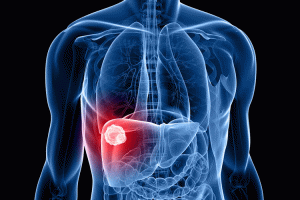
Hepatocellular carcinoma (HCC) is the most common primary liver cancer and a leading cause of cancer-related deaths worldwide.
While environmental and genetic factors contribute to HCC, increasing evidence points to epigenetic dysregulation as a central driver in hepatocarcinogenesis.
This review article published in eGastroenterology systematically explores the epigenetic mechanisms implicated in HCC pathogenesis, providing a comprehensive view of how these alterations contribute to tumour initiation, progression, and resistance to therapy.
DNA methylation, particularly the addition of a methyl group to the 5’ position of cytosine within CpG islands, plays a critical role in gene expression regulation.
In HCC, aberrant DNA methylation contributes to both the silencing of tumour suppressor genes and the activation of oncogenes:
(1) Hypermethylation of Tumour Suppressors: Genes such as CDKN2A, RASSF1A, and SOCS1 are frequently hypermethylated in HCC, leading to loss of function in pathways regulating cell cycle and apoptosis.
(2) Global Hypomethylation: This phenomenon affects genome stability and may activate transposable elements and oncogenes.
The article emphasises that these methylation changes can occur early during hepatocarcinogenesis, making them promising biomarkers for early detection.
Histone proteins undergo post-translational modifications such as acetylation, methylation, phosphorylation, and ubiquitination, which collectively regulate chromatin structure and gene expression:
(1) Histone Acetylation/Deacetylation: Histone acetyltransferases (HATs) and histone deacetylases (HDACs) are frequently deregulated in HCC.
Overexpression of HDACs leads to chromatin condensation and gene silencing of tumour suppressors.
(2) Histone Methylation: Aberrant histone methylation is also implicated.
The review highlights that histone methyltransferases like EZH2 are often upregulated in HCC, contributing to transcriptional repression of genes involved in tumour suppression.
These alterations reinforce the malignant phenotype and influence therapeutic responsiveness.
Noncoding RNAs (ncRNAs), including microRNAs (miRNAs), long noncoding RNAs (lncRNAs), and circular RNAs (circRNAs), have emerged as key players in HCC pathogenesis:
(1) MicroRNAs: Dysregulation of miRNAs such as miR-122, miR-221, and miR-21 modulates signalling pathways including Wnt/β-catenin, PI3K/Akt, and TGF-β, which are crucial in liver cancer progression.
(2) Long Noncoding RNAs: LncRNAs like HULC, MALAT1, and HOTAIR are overexpressed in HCC and act as oncogenic drivers by sponging tumour-suppressive miRNAs or interacting with chromatin modifiers.
(3) Circular RNAs: CircRNAs contribute to miRNA sponging and are involved in the regulation of cell proliferation and metastasis.
Importantly, these ncRNAs not only act as regulators but also hold potential as biomarkers for diagnosis and prognosis.
The review underscores the interplay between different epigenetic modifications in HCC.
For example, ncRNAs can influence DNA methylation and histone modifications, while histone modifiers can regulate the transcription of ncRNA genes.
This interconnected network amplifies the oncogenic effects of epigenetic dysregulation and may explain the heterogeneity and aggressiveness of HCC, making them candidates for noninvasive biomarkers and therapeutics:
(1) DNA Methylation Panels: Circulating methylated DNA fragments can serve as early indicators of HCC.
(2) ncRNA Profiles: Plasma levels of specific miRNAs and lncRNAs correlate with tumour stage, metastasis, and patient survival.
(3) DNMT Inhibitors: Agents like 5-azacytidine and decitabine restore tumour suppressor expression by demethylating DNA.
(4) HDAC Inhibitors: Vorinostat and belinostat show promise in reactivating silenced genes and enhancing sensitivity to immunotherapy and chemotherapy.
(5) Targeting ncRNAs: Antisense oligonucleotides and miRNA mimics are being developed to modulate the function of oncogenic or tumour-suppressive ncRNAs.
However, challenges remain in optimising the delivery, specificity, and safety of these therapeutics.
While the field of cancer epigenetics has advanced significantly, several gaps remain:
(1) Lack of Large-Scale Clinical Trials: Most findings are preclinical; large trials are needed to validate clinical utility.
(2) Epigenetic Plasticity: Tumours can adapt to epigenetic therapies, leading to resistance.
(3) Integration with Multi-Omics: Combining epigenomic data with transcriptomics and proteomics may enhance precision in diagnosis and treatment.
In conclusion, this review highlights the central role of epigenetic alterations in hepatocellular carcinoma, encompassing DNA methylation, histone modifications, and noncoding RNAs.
These mechanisms not only contribute to the initiation and progression of HCC but also represent promising avenues for diagnostic, prognostic, and therapeutic development.
As our understanding of the epigenetic landscape deepens, translating these insights into clinical practice could pave the way for more precise and effective interventions in HCC management.